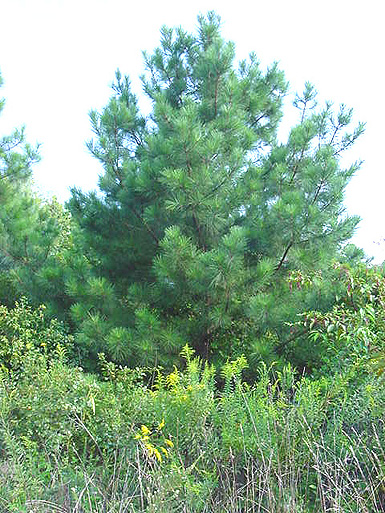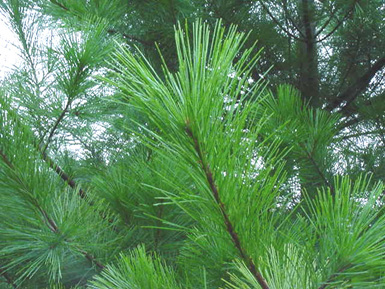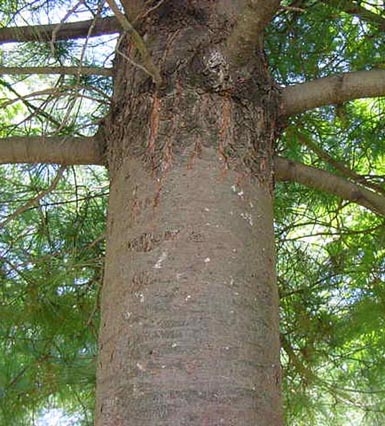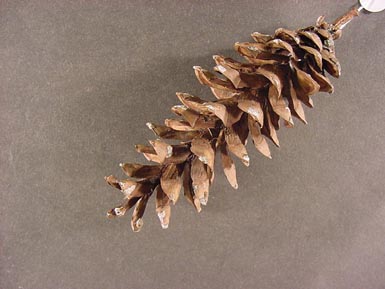Form: This is a large evergreen tree reaching 80 to 100 ft. in height and 2 to 4 ft. in dbh. Crowns often spread in width in open areas. This characteristic can be enhanced by the white pine tip weevil (Pissodes strobi), which attacks the terminal leader on white pine. It self-prunes poorly. Large trees often develop a lopsided, wind-swept appearance with large gaps between branches.

Needles:
Arrangement: 5 per fascicle
Length: 3-5 " long
Shape: acicular
Other: fine and limber needles are not as sharp as needles of other pines; white line along needle; sometimes blue-green in color

Bark: Gray to black and smooth when young; becoming scaly, plate-like, and thick with age.

Cones: The cone is narrow 3 to 8 in. long and occasionally curved.

Distinguishing characteristics: The tree has uni-nodal growth, which can be used for age determination (1 year for every node or whorl of branches), a large cone, 5 needles per fascicle and has plate-like bark.
Range: This species occurs from Maine to north Georgia, west to Kentucky.
Silvics: This species is one of the more shade-tolerant pines, particularly when young. Preferred sites are moist uplands or mountain coves.
Ecological and cultural importance: Historically, this species had great economic importance in the Lake States and Northeast. It is used today in furniture and cabinetry.